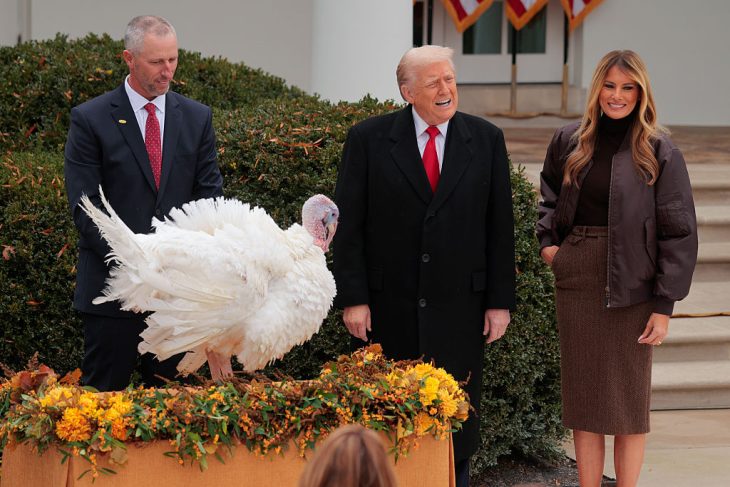America has a peculiar — indeed, unique — way of deciding national elections. Instead of a cumulative national vote, the president and vice president are determined by fifty separate state elections. The top ticket in each state (except Nebraska and Maine) receives all that state’s electoral votes, no matter how slim the margin of victory. Each state’s electoral votes are equal to its number of House members plus its senators. The winner needs 270 electoral votes.
What if, in this razor-thin election, both Donald Trump and Kamala Harris fall one vote short? Fortunately, that’s only a remote possibility, but it’s not impossible. It all depends on how some six or seven closely divided “swing states” split between the two candidates. There’s also a small chance that one or two “faithless electors” could gum up the works, deciding not to vote for the candidate they were pledged to.
What happens then? The answer comes in two baskets. The first is constitutional and procedural. What steps does the Constitution set out to break a tie? The second basket is partisan and political. How would voters on the losing side react?
Here’s a quick primer, beginning with the constitutional procedures.
If neither candidate receives 270 electoral votes, the decision is sent to the House of Representatives, as set out in the Constitution’s Article 2, Section 1, Clause 3. That would occur in mid- to late-January, when electoral votes are traditionally tabulated. The House members would be those elected in November and sworn in earlier in January 2025, not those currently sitting. The new Senate would choose the vice president at the same time.
The newly elected House does not vote as it normally would, with each representative casting a single ballot. Instead, each state — big or little — is allotted one vote. Delaware gets the same vote as California. The Senate procedure is different but still gives each state equal weight since each senator casts a separate vote.
If the election goes to the House, it takes twenty-six states to win. That gives the Republicans a crucial advantage since they currently hold a 28-22 edge. Although those numbers could change after November, they are unlikely to change dramatically. Even if Democrats win control of the House, Republicans are likely to control most state delegations and thus win a state-by-state vote.
The expectation, naturally, is that the party that controls each state delegation will vote for that party’s candidate. California, with more Democrats, would vote for Harris; Florida, with more Republicans, would vote for Trump. The only complication would come if a state had the same number of Democratic and Republican representatives. That state would probably be locked in a stalemate, unable to cast its vote.
These arrangements could conceivably lead to a president from one party (chosen by the House) and a vice president from the other (chosen by the newly elected Senate). Again, that’s highly unlikely, but it is not impossible.
The good news is that the Constitution lays out clear, explicit procedures to resolve a tie in the Electoral College and that those procedures are very unlikely to be needed.
The bad news is that, if the procedures were needed, the losers would be grumpy. Very, very grumpy. That’s true, regardless of which party wins.
The defense for these procedures is that they were well-specified in advance, written before either party existed (and are therefore politically neutral), and are the only peaceful way to resolve the impasse.
The attack will be that the newly chosen leaders lack legitimacy. After all, they wouldn’t have endorsement that comes from winning at the ballot box in November. Put differently, the procedures are those of a constrained, constitutional government, not a majoritarian democracy.
Beyond that, the Democrats and Republicans would emphasize additional issues to attack the outcome. If the Republicans lose, they will say that, once again, the will of ordinary Americans has been stomped on by Washington insiders and the Deep State. If Democrats lose, they will condemn the constitutional arrangements as anti-democratic, the same attack they have waged on the Senate filibuster and Supreme Court decisions.
The most disturbing aspect is that attacks on the new president’s legitimacy would come in an increasingly toxic, ideologically divided political environment. The 2016 and 2020 elections were extremely close and often damned as illegitimate by the losers. Trump certainly did so after November 2020. Less remembered is that Hillary Clinton repeatedly referred to Trump as an illegitimate president after her loss (though she did concede the election that night).
To make matters worse, Americans are deeply displeased with other basic institutions, both in government and outside. None has majority support, except for the military. Yet another contested election would compound this mounting “legitimacy deficit,” a very troubling problem for a constitutional democracy.
The only good news is that the chances of an electoral tie are remote and that the procedures to resolve it are already in place. Let’s hope they are never needed.


























Leave a Reply